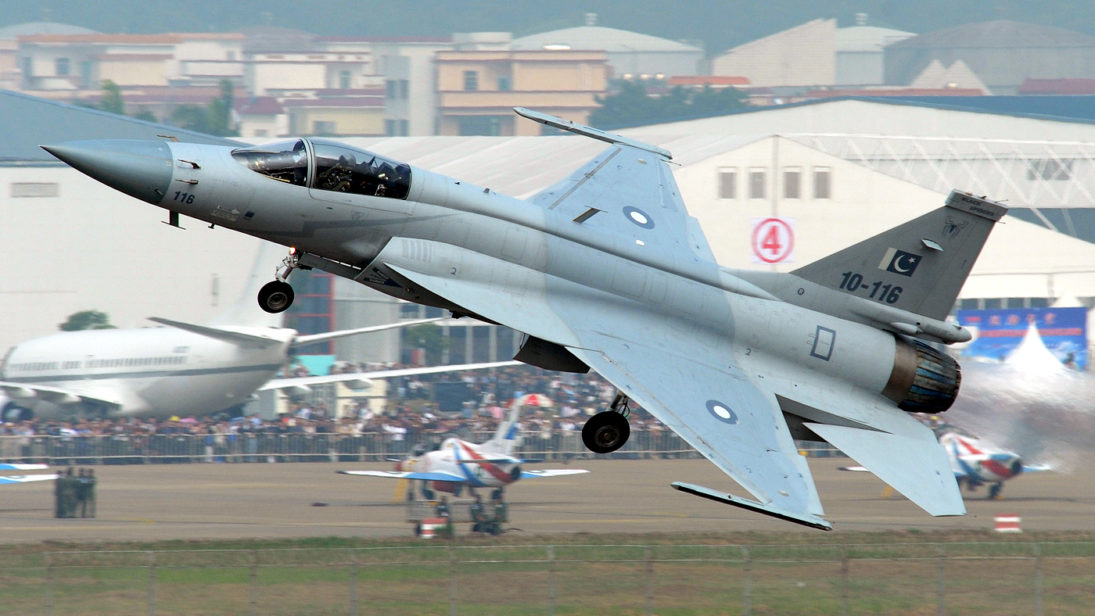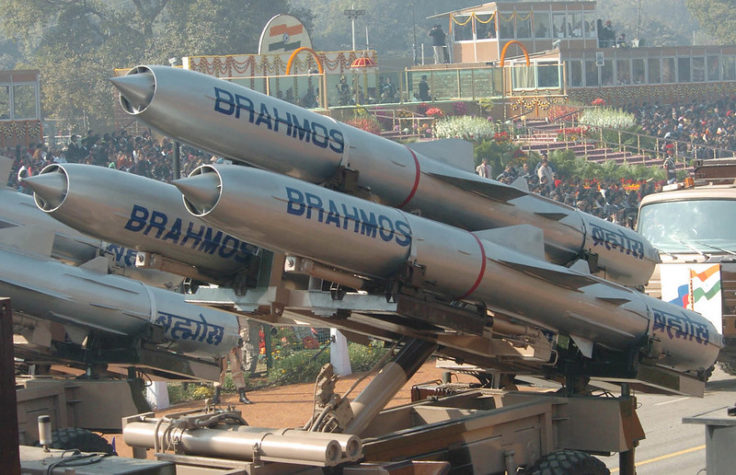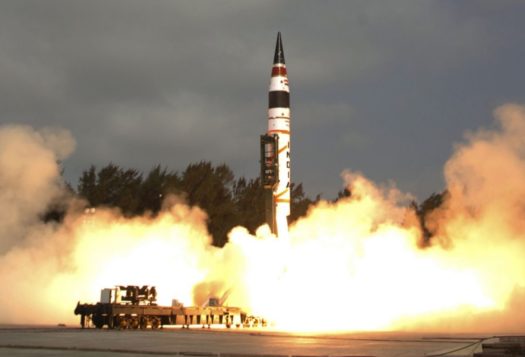
Last year, in response to a suicide bombing on a convoy of paramilitary forces in Indian Administered Jammu & Kashmir, India carried out the its first airstrike on Pakistan-proper since 1971 in Balakot, Khyber Pakhtunkhwa. In reassessing the crisis, the Indian Air Force’s (IAF) Balakot strike can be viewed as an example of the offense-defense imbalance contributing to strategic miscalculation of the adversary’s actual and perceived military capabilities. In the case of Balakot, India underestimated the will and the ability of Pakistan’s armed forces to defend the country and give a matching response to any act of aggression, and restore the status quo ante. Although ultimately a self contained crisis, it was fraught with the risk of inadvertent (conventional) escalation.
Conventional Acquisitions post-Kargil
Although the IAF’s February 26 strike was triggered by a suicide attack on Indian soldiers in Pulwama, India’s risk acceptance leading to kinetic action against Pakistan was also rooted in events and developments of the past two decades. The first was when the IAF went largely unchallenged by the Pakistan Air Force (PAF) during the Kargil conflict in 1999, which also did not retaliate a month later after India’s downing of a Pakistan Navy’s Atlantique surveillance aircraft along the international border. Although each side had competing narratives of the event, Pakistan maintained that the unarmed aircraft was in Pakistani airspace — as evidenced by the debris found on the Pakistan side of the border. The Kargil conflict was followed by the induction of multiple SU-30MKI aircraft in the IAF starting in 2002, and the addition of new aircraft and air defense systems by both the IAF and Indian Army.
In reassessing the crisis, the Indian Air Force’s (IAF) Balakot strike can be viewed as an example of the offense-defense imbalance contributing to strategic miscalculation of the adversary’s actual and perceived military capabilities.
Since Kargil, India has incorporated a plethora of weapon systems and platforms contributing to operational and logistical complexity with weaknesses in datalinks across various and platforms. Despite ongoing challenges and claims of aging equipment, India’s overall military modernization and buildup during the past two decades witnessed a significant increase in conventional military supplies from major weapons suppliers including the United States, Russia, Israel, and France. This coupled with an growing defense budget enabled India to become the second largest arms importer from 2015 to 2019.
Although Pakistan’s aircraft acquisitions suffered a setback following U.S. termination of military and economic aid over Pakistan’s nuclear weapons program in 1990 under the Pressler Amendment, the PAF acquired 18 F-16 Block 52 C/D aircraft starting in 2006 while continuing the mid-life upgrade of the PAF’s existing F-16 fleet and most significantly the steady success of the JF-17 Thunder program — jointly developed by China and Pakistan — continued thorough the post 1998 period. Pakistan has also raised its Airborne Early Warning and Control System (AWACS) fleet with support from China and Sweden and added electronic warfare platforms to its inventory.
Introduction of these systems has strengthened Pakistan’s command and control capabilities and its ability to respond to potential air attacks. The PAF has also focused on maintaining an effective pilot-to-plane ratio and on intensive training and operational readiness and inter-operability and effective data linkages across all the weapon platforms (Mirage-III and V, F-16s, JF-17s, F-7s and Chinese and Swedish AWACS) into an integrated air defense network. Nevertheless, the overall quantitative and qualitative balance in fourth generation fighter aircraft has clearly favored the IAF with the induction of SU-30 MKI and upgraded Mirage-2000 and Mig-29 aircraft. As, the IAF will take delivery of the first batch of the 36 Rafale jets in July 2020, the PAF is expected to induct the 50 Block-3 JF-17s by 2024.
Misreading Full Spectrum Deterrence
Strategic dissonance played its part in fueling India’s decision makers’ overconfidence that stemmed from misperceptions about Pakistan’s Full Spectrum Deterrence Posture (FSD). Since 2011, Pakistan’s FSD Posture has been primarily projected and viewed through its introduction of the short-range, nuclear capable battlefield ballistic missile (the 70 km-Nasr) in response to India’s Cold Start Doctrine (CSD).
FSD, however, was not only about nuclear forces but also prioritized conventional modernization and operational readiness as shown through Pakistan’s Azm-e-Nau exercises. Yet, Nasr became the focus of negative attention and criticism of Pakistan’s emerging nuclear posture and came to epitomize Pakistan’s FSD — particularly because Pakistan does not have a no-first-use policy. This led to the undermining of the growing credibility of Pakistan’s conventional force modernization program and misconstrued FSD as a nuclear war-fighting strategy thereby inaccurately projecting Pakistan as nuclear trigger happy — that Pakistan’s nuclear threshold was too low and it would quickly deploy and use its low-yield nuclear weapons against any small border or cross LOC incursion.
The Nasr-centric perception of Pakistan’s FSD resulted in miscommunication of the FSD as it ignored other options and capabilities available to deter and defeat India’s CSD while Nasr added another layer of deterrence. This in turn prompted calls by Indian officials and analysts to call Pakistan’s nuclear bluff while underestimating the efficacy and centrality of conventional deterrence and force readiness in Pakistan’s FSD. Meanwhile, India’s evolving posture has begun to show signs of change through military exercises, debates on doctrinal transformation and new military doctrines.
The Nasr-centric perception of Pakistan’s FSD resulted in miscommunication of the FSD as it ignored other options and capabilities available to deter and defeat India’s CSD while Nasr added another layer of deterrence.
The IAF conducted a country-wide exercise in 2018 — Operation Gaganshakti — was aimed at testing new operational concepts of a two-front war against Pakistan and China with joint operations with the Indian army and navy. It also included planning for possible nuclear conflict and joint operations involving potential counterforce strikes. Gaganshakti did not happen in doctrinal isolation, taking place in context of India release of the Joint Armed Forces Doctrine in 2017 and Land Warfare Doctrine in 2018. These doctrines indicated India’s growing desire to develop the capabilities for escalation dominance against Pakistan, speaking of deterring China while achieving operational superiority against Pakistan through the “Full Spectrum of Conflict,” designed to continue military operations even after crossing the nuclear threshold.
Notably, the release of the two documents was the first time India had revealed the broad parameters of its emerging strategic thought. It is also no coincidence that several senior Indian officials and analysts have initiated debate on a possible shift in India’s official nuclear policy of no first use coupled with speculation that India may be moving towards a counterforce or preemptive nuclear posture, which is vividly reflected in India’s development and testing of short-range, dual-use ballistic and cruise missiles, particularly the Brahmos’s integration with 42 SU-30MKI fighter bombers under the Strategic Forces Command. Therefore, the rhetoric and debate on India’s NFU has followed a steady growth and maturation of India’s counterforce capabilities.

Operation Swift Retort and Re-establishing Conventional Deterrence
Although the timing of the Balakot strike was likely driven by the BJP’s domestic political audiences, it was also a risk calculation that may have indicated that India thought it could escalate the crisis without a response from Pakistan due to India’s economic, political, and diplomatic clout with the West – especially after being designated as a regional net security provider by the United States. After the Balakot strike the United States appeared to have endorsed the strike as a legitimate action. Whereas John Bolton’s call with Ajit Doval may have encouraged India to proceed with the Balakot strike, the United States anticipated a Pakistani response as promised by its military spokesman, and urged restraint. It was only after the downing of an Indian Mig-21 inside Pakistani territory and the capturing of its pilot in the ensuring air battle on the morning of February 27, 2019 during the PAF’s “Operation Swift Retort” that the United States began a more active role in defusing the crisis. Both India and Pakistan conducted a carefully calibrated military action that aimed to keep the conflict below the nuclear threshold. However, escalation could very well have occurred. First the IAF’s stand-off weapons only hit an uninhabited mountainside in the Balakot strikes with no casualties and the PAF’s retaliatory strikes was likewise aimed at demonstrating capability and resolve that Pakistan said intentionally avoided direct hits to any military targets. This also served to satisfy domestic audiences.
The PAF’s swift retaliation restored and re-enforced the credibility and efficacy of Pakistan’s conventional deterrence. Operation Swift Retort demonstrated the PAF’s superior operational readiness, training, and resolve. The IAF, despite being the superior force, fared poorly – with Prime Minister Modi remarking that the results would have been in their favor if India had inducted the modern Rafale fighter jets. However, the Indian threat of Brahmos missile strikes against multiple Pakistani targets showed that the Indian leadership was becoming increasingly panicked after the capture of the Mig-21 pilot. As Pakistan communicated that it was ready and able to retaliate, reportedly several important capitals were involved in urging restraint including Russia, China, the UK, and the United States. But this crisis, at least in the Pakistani estimation, showed that the United States was not the only third-party mediator with influence, and cast doubts on the United States being an honest broker in India-Pakistan crises.
Asymmetries and Risks of Future Miscalculation
While India underestimated Pakistan’s resolve and capability to give a befitting response leading to the Balakot operation, Pakistan must not underestimate India’s sustained conventional and strategic force buildup. India is likely to identify gaps in its existing operational capabilities, particularly of the IAF, and will seek to address them over time. At present, India does not have the overwhelming quantitative superiority to decisively defeat Pakistan in a limited conventional conflict, let alone fight a two-front war or confront China on its own. However, the overall conventional and growing nuclear imbalance and the asymmetry in national power is increasing. India is undeterred from faithfully pursuing its long-term strategic objectives of building the capacity for escalation dominance, and full spectrum conflict against Pakistan while preparing for a two-front war. However, India’s dual approach of seeking to deter China while pursuing escalation dominance against Pakistan is reflected in the ongoing standoff along the Line of Actual Control. India is clearly avoiding escalation and appears to be preparing for a fait accompli. This is in stark contrast with the Kargil conflict with Pakistan in 1999.
Although the India-U.S. strategic partnership is primarily based on a shared goal of countering China, it adds to existing asymmetries and is viewed as destabilizing by Pakistan.
In the aftermath of the COVID-19 pandemic, India has indicated it will put greater emphasis on indigenization for the modernization of its conventional forces. This will help in cutting costs of expensive foreign acquisitions, while continuing to gain from defense and strategic partnerships with the United States, France, Israel, Russia, and others. India is aiming at securing a decisive quantitative and qualitative edge over Pakistan, and building the requiring capability to deter China, and if necessary, execute a two-front war with both. That is only possible through sustained conventional force modernization and build-up of strategic nuclear forces. Although the India-U.S. strategic partnership is primarily based on a shared goal of countering China, it adds to existing asymmetries and is viewed as destabilizing by Pakistan. Pakistani threat perceptions are fueled by the positioning of the bulk of Indian conventional forces against it, and a large part of India’s ballistic and cruise missiles being tested and developed with Pakistan specific-ranges. Yet, India’s conventional and strategic force buildup and modernization against China can potentially be redeployed for use against Pakistan, which is focusing on upgrading and modernizing its conventional forces and is working on collaborative defense projects with trusted partners and allies such as China and Turkey. Pakistan’s efforts are aimed at maintaining the requisite level of credible conventional deterrence, independent of Pakistan’s strategic forces.
Whether or not the next crisis escalates, Pakistan and India are likely to respond through conventional means but the growing unpredictability of the desired effects of dual-use platforms such as ballistic and cruise missiles, if employed, can produce unintended consequences. Rapid escalation is certain in a future crisis if large-scale counterforce strikes, even with conventional warheads, in conjunction with a well-coordinated air dominance campaign by the IAF (once the IAF modernization program matures), attempts to degrade, destroy, or decimate critical Pakistani strategic assets. This can also take the shape of a surprise joint naval operation where Pakistan is the most vulnerable, given that its ability to absorb attrition, due to a relative numerical disadvantage in surface fleet and anti-submarine warfare capable aircraft, may incentivize preemption against Pakistan’s sea based deterrent. Moreover, a conventional counterforce strike campaign against Pakistan’s command and control and deployed strategic assets is a recipe for rapid vertical escalation.
In the final analysis, India’s diverse and sustained investment in military modernization, and induction of force multipliers on land, in the air and space domain, and at sea, and re-organization of its armed forces for joint operations, risk triggering deterrence failure in South Asia over the next decade. Should the technological asymmetries continue to grow beyond a certain point, they will further encourage belligerency, exacerbate the arms race instability, and incentivize preemptive proclivities of irrational decision-makers.
***
Image 1: Pakistan Airforce FC-1 Xiaolong via Wikimedia Commons
Image 2: Public.Resource.Org via Flickr


